Home | Major Sporting Events | Olympic Games
1976 Olympic Games - Montreal
PreviousNext
In 1976, Montreal became the first Canadian city to host the Olympic Games. This experience challenged and enriched Canada's appreciation for the spectacle of Olympic competition. From the outset organizers encountered political controversy when the International Olympic Committee disregarded bans on athletes from nations who had recently maintained sporting ties with South Africa. South Africa had been banned from Olympic competition since 1964, and was widely condemned by the international community for apartheid, a contentious national policy of racial segregation. Appalled at organizer's apparent disregard for South Africa's racist politics, 31 nations ultimately boycotted Olympic competition in Montreal. International scrutiny in 1976 was compounded by the subdued success of Canada's Olympic team, who collected only 11 medals and failed to win gold on home soil. Placed under intense pressure in an uncomfortably politicized atmosphere, many Canadian athletes nevertheless gave passionate performances that continued to inspire and excite.
One of the most compelling stories to emerge from Olympic competition in 1976 exemplified the high degree of personal accountability Canadian athletes maintained despite the difficulty of performing in front of emotional spectators on home soil. Prior to the high jump finals on the second-last day of the competition, American athlete Dwight Stones had made derogatory statements to the media about French Canadians, criticizing their organization of the Olympic Games. Indignant local spectators engaged in a rowdy "battle of the boos" with Stones' supporters. However, his Canadian opponent Greg Joy remained focused on his personal performance, jumping for 2.23 metres to overcome the American competitor and win a silver medal. The quiet inner strength demonstrated by Joy's success was an emotional high water mark for Canadians at the 1976 Olympic Games.
Susan Nattrass, often referred to as "Canada's Annie Oakley", became the first woman to ever compete in Olympic trapshooting. Though shooting was traditionally dominated by men, Nattrass has excelled in the sport for nearly four decades, first establishing her exceptional talent by winning the Women's World Shooting Championship six consecutive times between 1974 and 1981. Her success required remarkable dedication, as competitive shooting enjoyed only minimal public recognition and sponsorship in Canada, and expenses for equipment and travelling to compete were considerable. However, Susan's dynamic performances were not motivated by competitive rivalry, as she explained, "I'm not out to beat somebody. I just try to do the best that I can. When I get selfish ...I don't do very well." She found fulfillment instead by challenging herself to constantly improve the mental and physical focus required to shatter clay targets with a shotgun that were flying at all angles through the air at 90 miles an hour.
Even though Susan Nattrass placed a disappointing 25th at the 1976 Olympic Games in Montreal, her unprecedented appearance inspired her to become a groundbreaking ambassador for women in shooting sports. Nattrass went on to lobby, over several decades, with trademark dedication for separate women's Olympic shooting events to encourage higher participation and gender balance in the sport she loved. Her dream was finally achieved in 2000, with the creation of a separate women's trapshooting competition at the Olympic Summer Games in Sydney, Australia.

The 1976 Olympic relay torch had a black perforated cylinder on a red aluminum handle. The flame was lit in Olympia, Greece and carried to Athens by runners. Using telecommunications technology it was converted to a coded signal which was transmitted via satellite to Ottawa where it was changed to an optic signal and finally used to ignite the torch. The relay then went from Ottawa to Montreal.
Collection: Canada's Sports Hall of Fame
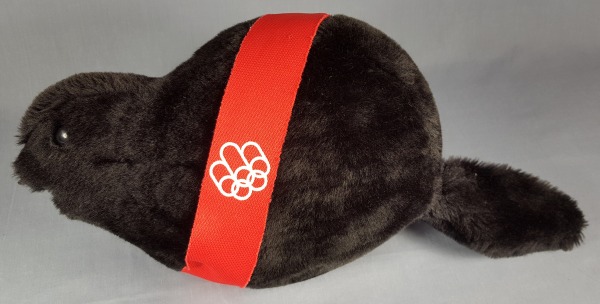
The mascot for the Olympic Games in Montreal was a black beaver named Amik wearing a red band with the Montreal logo, symbolizing the ribbon on the winners' medals. The logo for the Games is the Olympic rings on an M-shaped podium. The centre is the athletic track which was the focal point of the Games.
Collection: Canada's Sports Hall of Fame

Montreal produced eight key posters for the 1976 Olympic Games including one for yachting. This event was held in Kingston, Ontario and was the only venue outside of Montreal. Other posters included the Olympic Stadium, the mascot Amik the Beaver and the Olympic flame.
Collection: Canada's Sports Hall of Fame
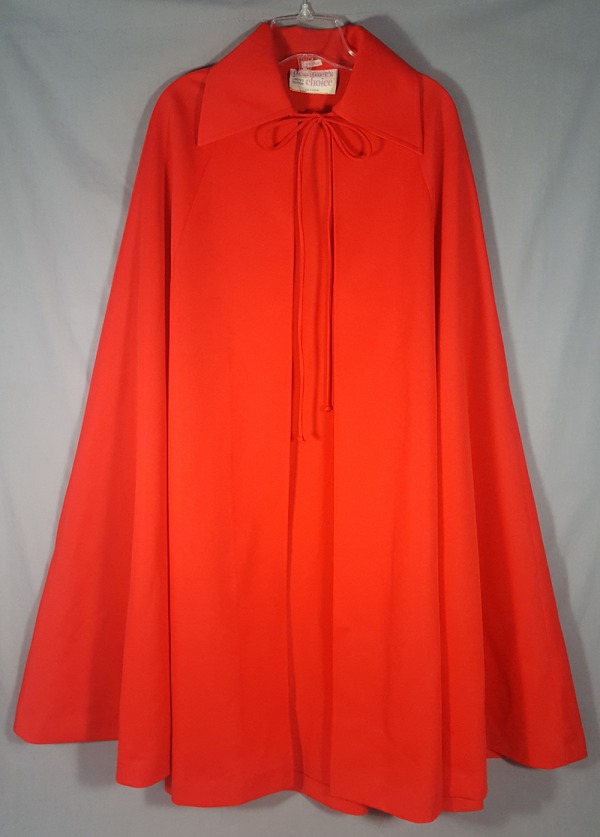
The 1976 Olympic Games uniforms worn by staff and volunteers were designed by four fashion designers. The colours varied according to the service and the style according to the position. Red was reserved for official functions, hostess and guides. The cape was worn by medal presenters.
Collection: Canada's Sports Hall of Fame
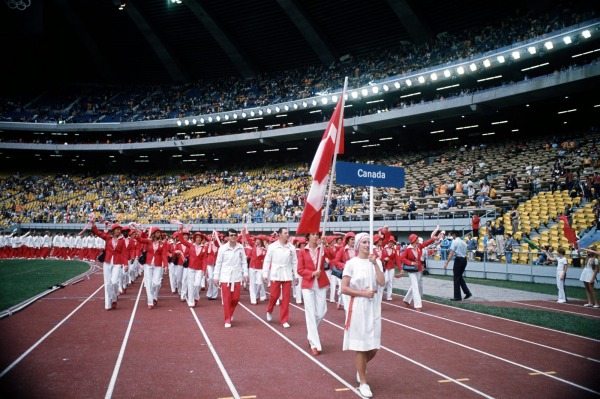
As the host country in 1976 the Canadian team entered the stadium last at the opening ceremonies. The flag bearer was Abby Hoffman who competed in the 800 metre event. For Canadians the Games were both an exhilarating and sobering experience as they saw the high level of competition and experienced with the athletes the intense pressure to perform well. The Canadian team won 11 medals.
Collection: CP PHOTO
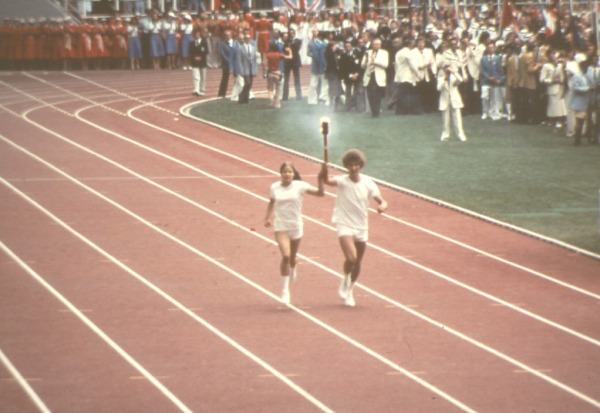
The final torchbearers at the 1976 Olympic Games were two 15-year olds Stéphane Préfontaine and Sandra Henderson chosen to represent Canada's unity and linguistic heritage. This was the first time that two people lit the Olympic Flame and Sandra was only the second woman to perform this honour at the Olympic Games.
Collection: Canada's Sports Hall of Fame
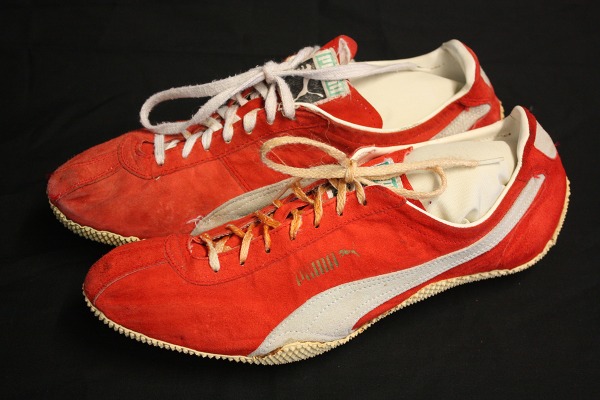
Grey Joy's final jump over the high bar, on the second last day of athletic competition in 1976, is an iconic moment for Canadians at the Olympic Games. These are his track shoes that he wore. His excellence and courage was acknowledged when he was honoured with carrying the flag at the closing ceremonies.
Collection: Private Collection: Greg Joy

The high jump event at the 1976 Olympic Games was one of high excitement. The Canadian fans cheered their hero Greg Joy while they booed the American rival and the American fans reciprocated. Despite the difficult weather conditions and the booing, that he likened to being at a hockey game, Greg Joy showed his focus and discipline and won the silver medal with a jump of 2.25m.
Collection: CP PHOTO/Fred Chartrand

The first gold medal in high jump was won by Duncan McNaughton at the 1932 Olympic Games in Los Angeles. McNaughton had to convince the Canadian Olympic Committee to include him on the team. Forty-four years later Grey Joy won a silver medal at the 1976 Olympic Games and 36 years after that Derek Drouin won a bronze medal at the 2012 Olympic Games in London.
Collection: Canada's Sports Hall of Fame

Trap shooting allows shooters to have the gun shouldered when they call for the targets that fly off at different angles and heights and a speed of 105 kph. The sport requires focus, discipline and patience. These are qualities Susan Nattrass has exhibited throughout her competitive career.
Collection: Canada's Sports Hall of Fame
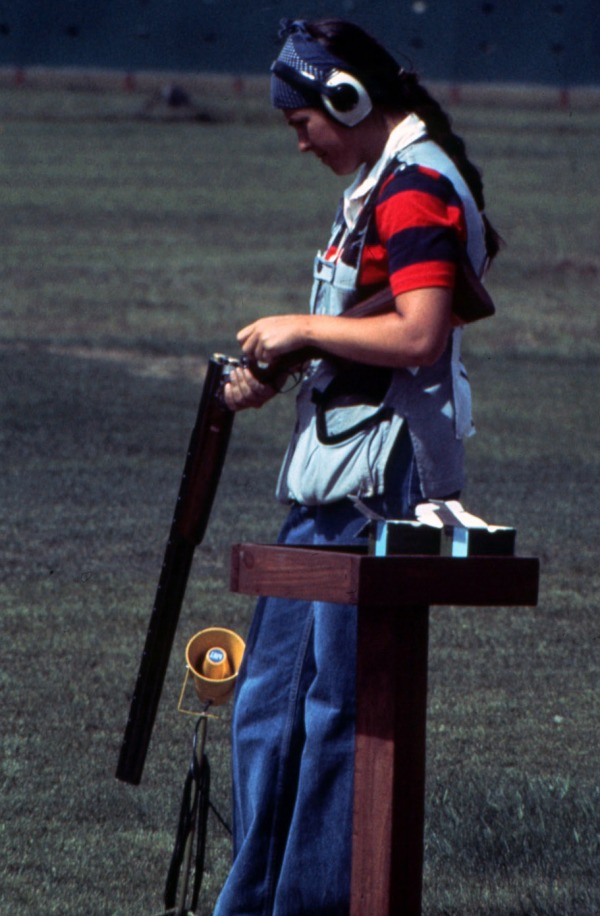
Susan Nattrass has contributed to her sport by helping new athletes reach an international level of performance. She has coached not only Canadians but athletes from other nations. Her dedication and perseverance has kept her at the top of her field and her joy is in seeing so many more women competing.
Collection: Canada's Sports Hall of Fame
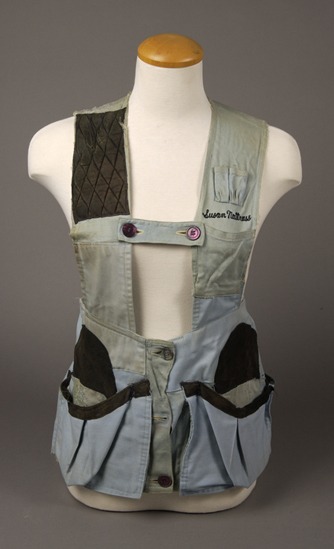
Susan Nattrass wore this shooting vest from 1970 to 1974 when she was a member of the All American Trap Team. She is synonymous with competitive shooting in Canada and has fought for women to have their own events and that trap and skeet shooting remained in the Olympic Games. For her it is about acceptance and fighting for what is right within her sport.
Collection: Canada's Sports Hall of Fame
Previous Next


